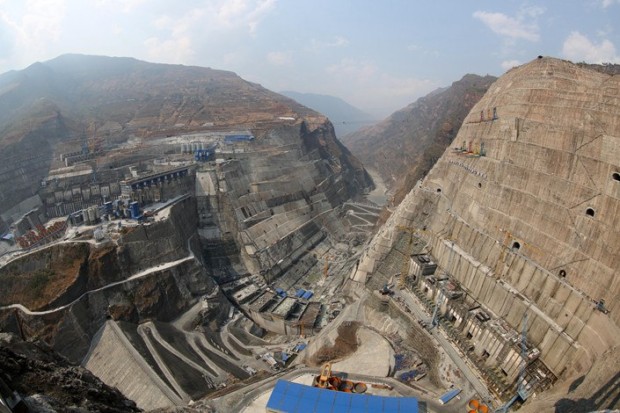CHINESE HYDROPOWER COMPANIES CRITICISED FOR FAILING TO MEET ENVIRONMENTAL AND SOCIAL STANDARDS
New report finds world’s largest hydropower firms are falling short of environmental and social standards.
The world’s largest hydropower companies, made up of mainly Chinese firms, fail to meet basic environmental and social standards when building new dams, research by an environmental group has found.
International Rivers, which advocates for the environment and opposes “destructive dams”, released the study, called “Watered Down”, on 9 December. It found that firms are failing to take responsibility for the impacts of their projects.
The report, which uses information from experts including California Institute of Technology academic Thayer Scudderwith, condemned the hydropower companies for falling short of international ecological standards, compromising social and environmental objectives to meet budgets and deadlines, lack of public disclosure of information affecting local communities and poor due diligence.
The publication follows indications from Beijing that it wants to develop hydropower in Tibet. In November 2019 Chinese hydropower companies had as many as 28 proposals awaiting government approval for planned new dam projects in Tibet, The Diplomat reported.
“Hydropower corporations consistently relinquish environmental and social responsibilities and hide behind contract types,” the study by International Rivers found, adding, “most of the companies are primarily concerned about staying on schedule during project building, to the detriment of social and environmental objectives.”
The report focuses on Chinese state-owned firms, which account for around two thirds of all dams built globally. Those named include Sinohydro International, PowerChina Resources, and China International Water and Electric, which is a subsidiary of China Three Gorges.
Through research, interviews and visits to dam construction sites in a range of countries between 2016 and 2019, the organisation found breaches in standard practice.
For example, the report said only one in seven of the projects studied made environmental impact assessments publicly available before dam construction. It looked at projects in different regions of the world, from Africa to Asia.
Large dams have been regularly criticised for their “negative environmental and social impacts: changes in water and food security, increases in communicable diseases, and the social disruption caused by construction and involuntary resettlement,” the World Health Organisation has said.
Despite the benefits of the fossil fuel free energy they produce, dams can damage the environment by altering flows and conditions in rivers, restricting mineral rich sediment from reaching farmland and threatening the habitat of fish and other freshwater animals.
In 2019 one of the world’s largest fish, the Chinese paddlefish which lived in China’s Yangtze River, was declared extinct. A paper published in Science of the Total Environment found the species went extinct, mainly because of overfishing and dam building.
As of 2018, China has planned to build or was already constructing dams along major rivers in Tibet and the surrounding regions including on the Mekong, Jinsha, Yalong and Dadu rivers according to data compiled by Brian Eyler, southeast Asia programme director at the Stimson Center, a Washington D.C. based think-tank.
Josh Klemm, policy director at International Rivers and co-author of the report said: “Certain projects simply should not be built, owing to their irreversible impacts on endangered species, violations of indigenous peoples’ rights, or because of the acute risk of impoverishing displaced communities.”
“Companies must embed proper due diligence in how they evaluate potential projects, even if it means passing on potentially profitable business opportunities.”
International Rivers called for the Chinese hydropower companies and others to adopt enforceable standards for dam construction in step with international best practices and shift towards producing clean energy through solar and wind.
source by:freetibet.org



comment 0